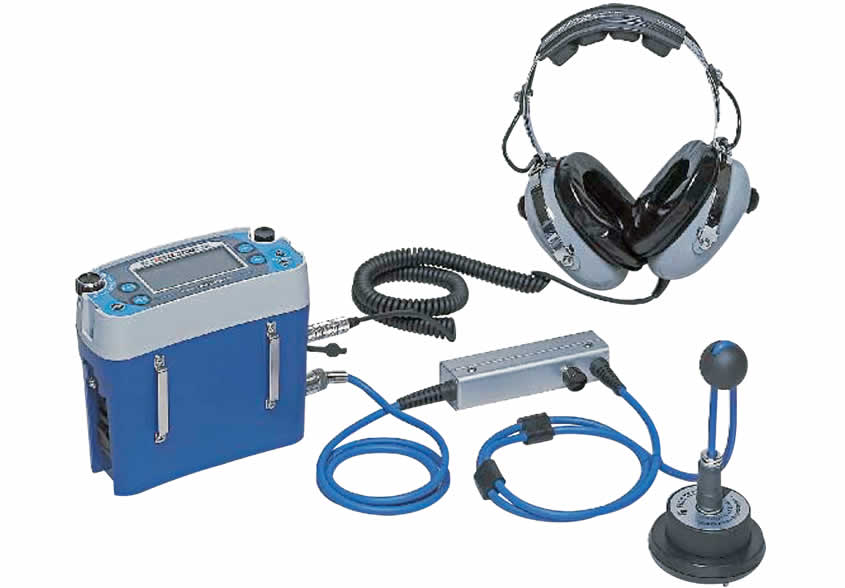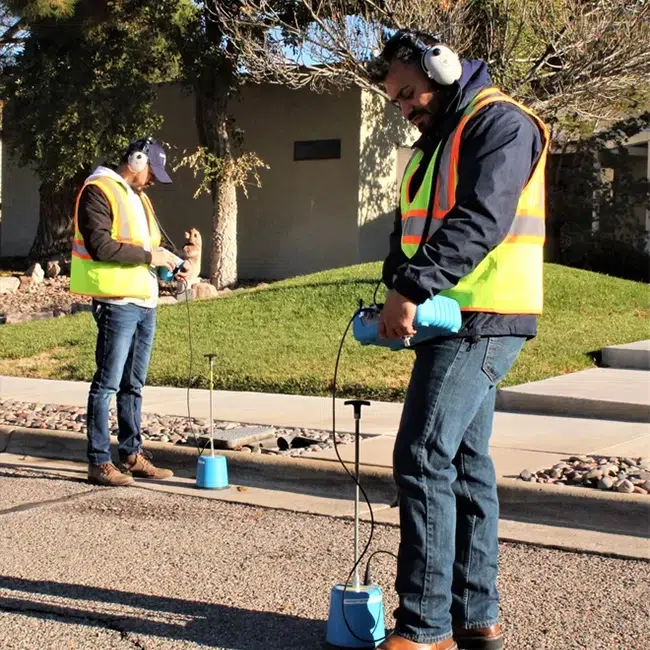Discover Reliable Water Leak Detection Solutions for Accurate and Quick Results
Discover Reliable Water Leak Detection Solutions for Accurate and Quick Results
Blog Article
Ingenious Solutions for Early Detection of Water Leaks in Structures and Facilities
As the integrity of structures and infrastructure is paramount, the challenge of early detection of water leakages has actually stimulated ingenious options that assure to transform the method we protect against potential problems. From cutting-edge leakage detection technologies to the deployment of IoT sensing units for real-time monitoring, the landscape of leakage avoidance is advancing rapidly. Maker discovering formulas supply a look right into the future of leakage prediction, while thermal imaging provides a non-intrusive approach for pinpointing hidden leaks. Automated water flow analysis systems are reshaping exactly how leaks are recognized and dealt with, leading the way for a proactive approach to water leak discovery. Each of these services holds the crucial to making sure the reliability and longevity of our developed environment, prompting a change towards a much more lasting and efficient future.
Advanced Leakage Detection Technologies
Advanced leakage discovery innovations, outfitted with sophisticated sensing units and algorithms, play a vital duty in quickly determining and pinpointing water leaks in different settings. These modern technologies employ a combination of acoustic, thermal, and electro-magnetic sensing methods to detect leaks accurately. Acoustic sensing units find the noise of getting away water, permitting specific localization of the leak source. Thermal imaging detects temperature modifications brought on by water leak, giving one more efficient method for leak recognition. Electromagnetic sensors can identify changes in electro-magnetic areas created by water, providing yet an additional layer of leak discovery capability.

IoT Sensors for Real-Time Surveillance
In the realm of modern water leakage detection, the integration of IoT sensors for real-time surveillance represents an essential innovation in improving proactive leak detection abilities. These sensing units use continuous surveillance of water supply, offering real-time data on water flow prices, pressure variations, and temperature changes. By leveraging IoT modern technology, these sensing units can identify even the smallest abnormalities in water usage patterns, allowing very early identification of prospective leaks before they rise into significant problems.
IoT sensing units transfer information to a centralized system, where advanced formulas evaluate the information and generate informs or alerts when abnormalities are spotted. This real-time surveillance capacity permits homeowner or facility supervisors to immediately address leaks, lessening water damage, minimizing repair work expenses, and preserving water resources.
Furthermore, IoT sensors can be integrated with building monitoring systems, enabling computerized actions to detected leakages, such as turning off water valves or triggering pumps to reduce the influence of leaks. On the whole, the application of IoT sensing units for real-time monitoring dramatically boosts the performance and effectiveness of water leakage detection in structures and facilities.
Machine Knowing Algorithms for Leak Prediction

One trick benefit of utilizing machine learning for leakage prediction is its ability to continuously find out and boost its precision over time. As more data is gathered and fed right into the algorithm, it can fine-tune its forecasts and adapt to changing conditions, ultimately boosting the dependability of leakage discovery systems.
Furthermore, artificial intelligence algorithms can aid in determining subtle signs of leakages that may go undetected by typical tracking methods. water leak detection. By evaluating complicated information embed in Our site real-time, these formulas reference can offer early warnings and signals, enabling prompt intervention and preventative maintenance to mitigate possible water damage and connected costs
Using Thermal Imaging for Leak Discovery
Thermal imaging modern technology offers a promising method for finding water leakages in different systems and facilities. By using infrared radiation and temperature differences, thermal imaging video cameras can identify covert leaks that are not quickly visible to the naked eye. When water leaves from pipelines or frameworks, it usually transforms the temperature level of the surrounding area, developing temperature level differentials that thermal video cameras can capture. These temperature level irregularities are then translated into visible images, highlighting the exact place of the leak.
One of the crucial advantages of thermal imaging for leak discovery is its non-intrusive nature. Unlike standard approaches that may require burglarizing wall surfaces or floorings to find leakages, thermal imaging enables non-destructive screening. This not only saves time and decreases costs but also decreases disruption to the building or infrastructure being analyzed. In addition, thermal imaging can promptly check big areas, giving a thorough review of prospective leak sources in a prompt way. Overall, the use of thermal imaging modern technology improves the performance and precision of water leak discovery, making it a beneficial tool for maintaining the honesty of buildings and infrastructures.
Automated Water Flow Evaluation Systems
Just how can computerized water flow evaluation systems revolutionize the discovery and management of leakages in various systems and facilities? Automated water circulation evaluation systems use a proactive technique to leakage detection by continually checking water flow rates and patterns. By developing standard data, these systems can promptly identify variances that might suggest a leakage, enabling prompt treatment to avoid considerable damage.
These systems use innovative algorithms to evaluate real-time information and provide immediate informs when abnormalities More Bonuses are discovered, permitting swift action to be taken. Furthermore, computerized water flow analysis systems can be integrated with structure monitoring systems or IoT systems, enhancing total performance and enabling remote monitoring abilities.
In addition, the data accumulated by these systems can be used for anticipating upkeep purposes, assisting to recognize potential powerlessness in the facilities prior to leaks happen. In general, the application of automated water flow evaluation systems can dramatically boost leak detection and management techniques, inevitably causing set you back savings, reduced water waste, and boosted sustainability in buildings and infrastructure.

Conclusion
In conclusion, the combination of sophisticated leak detection technologies, IoT sensors, artificial intelligence formulas, thermal imaging, and automatic water circulation analysis systems provides ingenious services for early detection of water leaks in structures and framework. These modern technologies make it possible for real-time surveillance, forecast of leaks, and effective discovery methods to stop water damages and waste. Applying these solutions can aid in maintaining the integrity and sustainability of water supply in different setups.
Report this page